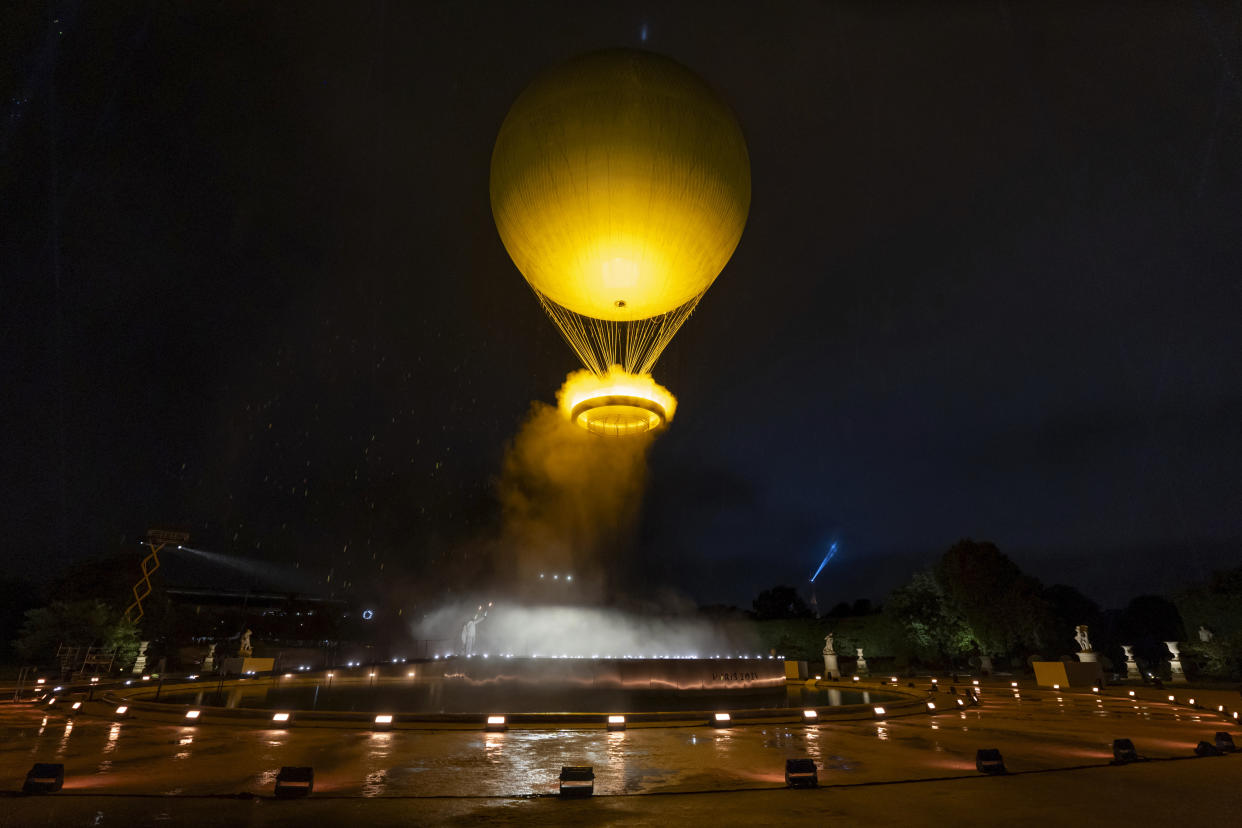Paris 2024: The Olympic flame is ... not really a flame

PARIS — When is a flame not a flame? When it's an environmentally responsible alternative, apparently.
For all the hue and cry about the artistic merit of the Opening Ceremony, the closing elements of the show won almost universal praise, particularly the lighting of the Olympic cauldron. After a (very) long procession of famed French athletes carried the flame from the Seine River through the Jardin des Tuileries beside the Louvre, Marie-José Pérec and Teddy Riner passed the flame from torch to cauldron.
The cauldron — which forms the base of a spherical hot-air balloon — then lifted into the air, a tribute to the original balloon flight, which took off from the same location in 1783. The cauldron flies nearly 200 feet above the Paris skyline in the evening — held in place by a tether — and then returns to the ground during the day. The cauldron stands roughly 90 feet high, and the cauldron extends more than 20 feet in diameter.
But is the cauldron really, you know, burning? Short answer: No. That's not actually a flame shooting up from the base of the cauldron, which is probably obvious given that the tether lines which run through the "flame" don't catch fire.
So what is it? A slick, 100 percent electric combination of light and water vapor that only seems to be a flame. The Paris Games are endeavoring to be the most environmentally responsible ever — from the footprint of the venues to the cups used for drinks — and this approach fits into that mission. Powered by EDF, France's electric utility, the ring uses 40 LED projectors that light up a cloud of mist created by 200 high-pressure nozzles.
“A premium Paris 2024 partner helped us with the cauldron in order to avoid having to use carbon fuels in order to light up the torch and the cauldron for the duration of the Games," said Tony Estanguet, head of the Paris 2024 Olympic organizing committee. “It’s not actual gas that was used to light the cauldron. It’s CO2 together with water vapor and some light in order to avoid spending several tons of actual gas.”
The cauldron will remain in the Jardin des Tuileries during the Olympics, and visitors can check it out up close during daylight hours. Per Olympic tradition, which goes back nearly a century, the cauldron must remain lit for the duration of the Games, and then is extinguished during the Closing Ceremony.


